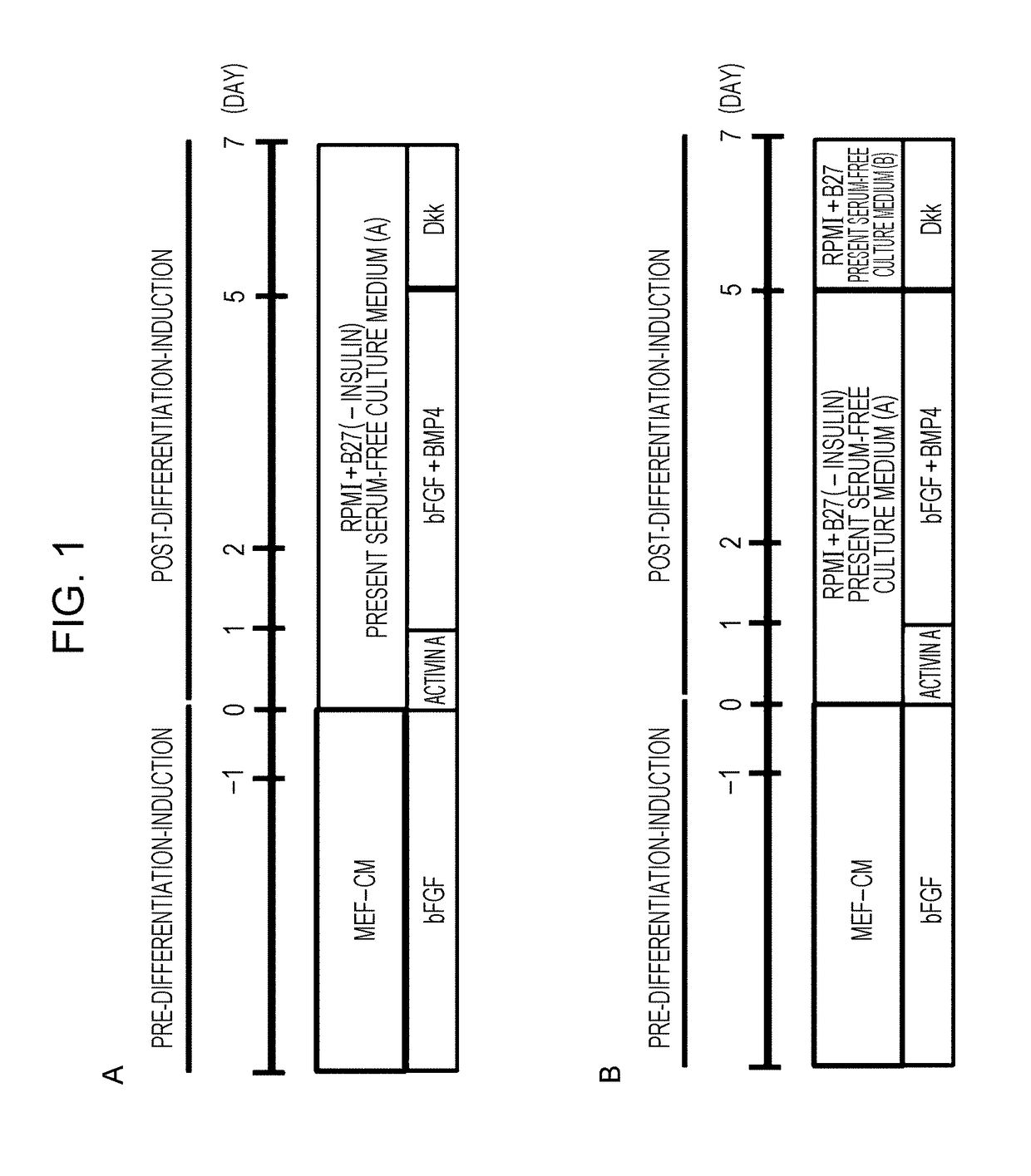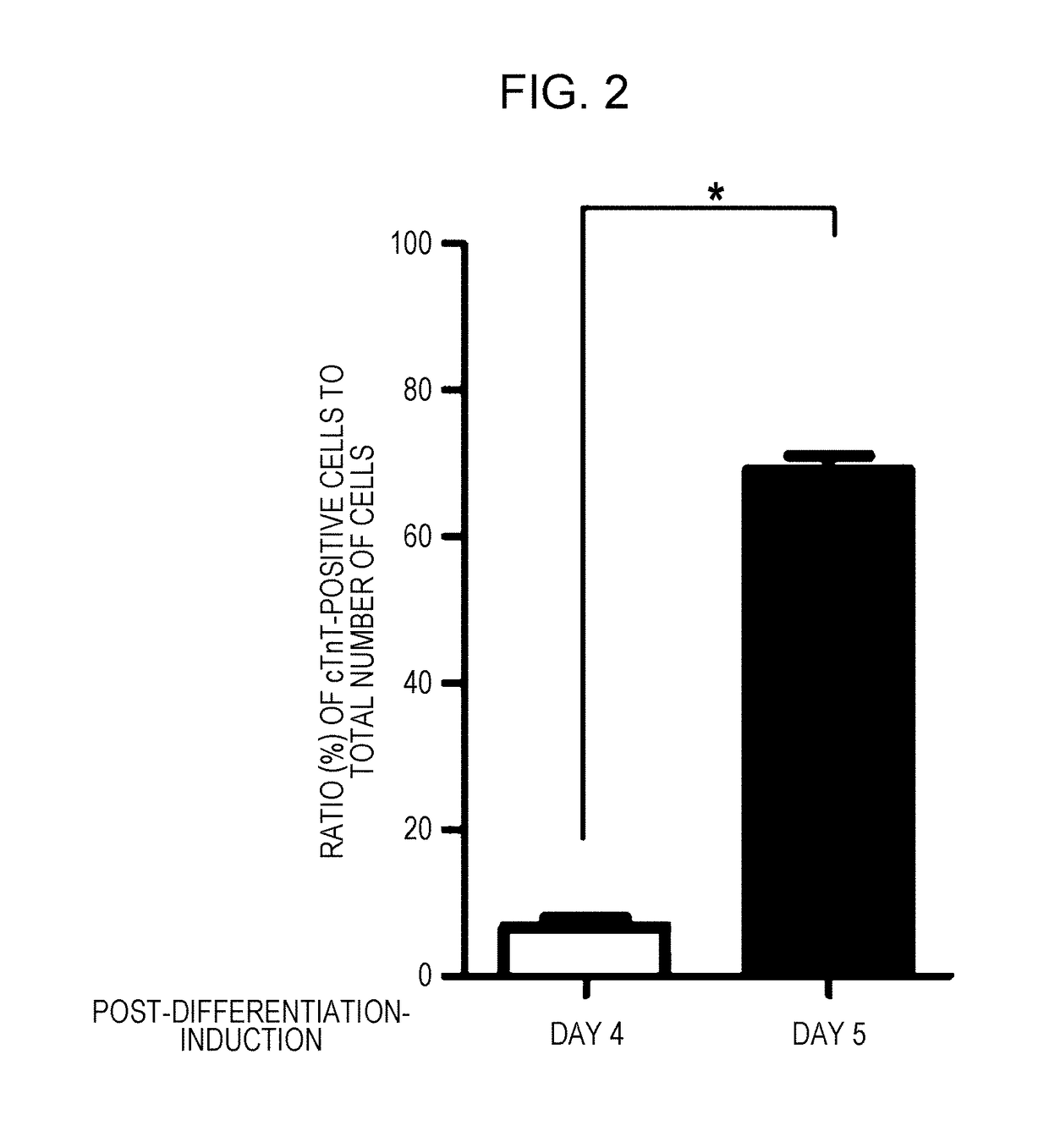CD82-positive cardiac progenitor cells
a technology of cd82 and progenitor cells, applied in the field of cd82-positive cells, can solve the problems of cardiac failure, cardiac disease is a leading cause of death in developed nations, and myocardium cannot be regenerated by intervention treatment, etc., and achieves low heart rate, increased heart rate, and high potential for self-multiplication
- Summary
- Abstract
- Description
- Claims
- Application Information
AI Technical Summary
Benefits of technology
Problems solved by technology
Method used
Image
Examples
example 1
Subculture of Human iPS Cells
[0084]Human iPS cells (201B6) (provided by Professor Yamanaka, Kyoto University) were passaged in a Mouse embryonic fibroblast-conditioned medium (MEF-CM) (Knockout DMEM [manufactured by Gibco] containing Knockout SR [manufactured by Gibco] and 2-ME [manufactured by Gibco]) containing 4 ng / mL bFGF (basic fibroblast growth factor) (manufactured by Wako Pure Chemical Industries, Ltd.) (hereafter, referred to as “the present MEF-conditioned medium”), so as to adhere to a culture dish (10 cm dish [manufactured by Falcon]) coated with Matrigel (1:60 dilution, manufactured by Invitrogen Corporation), at 37° C. and 5% CO2.
[Present Protocol]
[0085]1) Induction of differentiation into cardiomyocytes was carried out in accordance with the present protocol (FIG. 1B), which is a further modification of Modified DD protocol (Uosaki H, et al, PLoS One 2011; 6: e23657) (FIG. 1A). Details of the present protocol will be described in 2) to 5) below.
2) Human iPS cells cult...
PUM
| Property | Measurement | Unit |
|---|---|---|
| pH | aaaaa | aaaaa |
| temperature | aaaaa | aaaaa |
| temperature | aaaaa | aaaaa |
Abstract
Description
Claims
Application Information
 Login to View More
Login to View More - R&D
- Intellectual Property
- Life Sciences
- Materials
- Tech Scout
- Unparalleled Data Quality
- Higher Quality Content
- 60% Fewer Hallucinations
Browse by: Latest US Patents, China's latest patents, Technical Efficacy Thesaurus, Application Domain, Technology Topic, Popular Technical Reports.
© 2025 PatSnap. All rights reserved.Legal|Privacy policy|Modern Slavery Act Transparency Statement|Sitemap|About US| Contact US: help@patsnap.com



